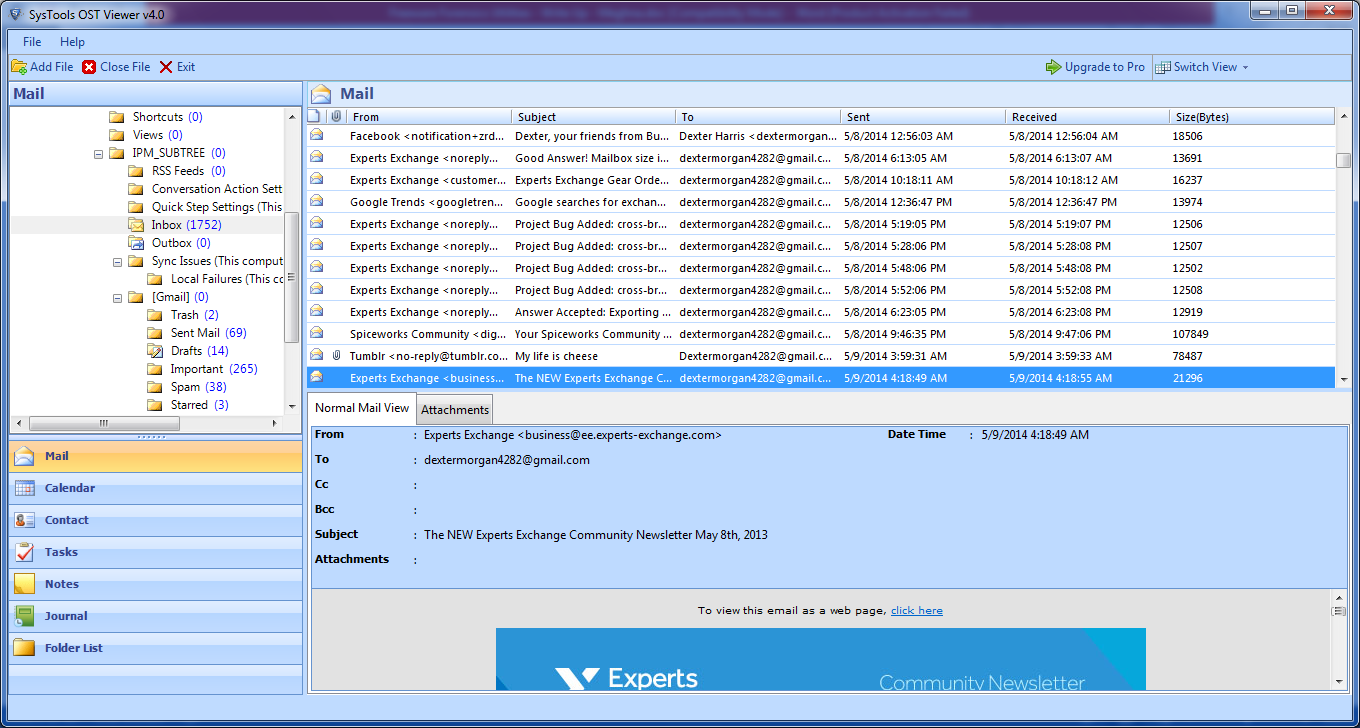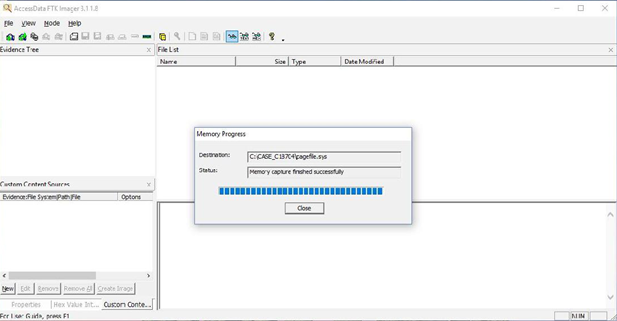
- Image system ram using accessdata ftk imager lite how to#
- Image system ram using accessdata ftk imager lite verification#
Image system ram using accessdata ftk imager lite verification#
When making a copy, consider: Size of the source disk Lossless compression might be useful Use digital signatures for verification When working with large drives, an alternative is using tape backup systems Whether you can retain the disk Guide to Computer Forensics and Investigationsġ3 Contingency Planning for Image AcquisitionsĬreate a duplicate copy of your evidence image file Make at least two images of digital evidence Use different tools or techniques Copy host protected area of a disk drive as well Consider using a hardware acquisition tool that can access the drive at the BIOS level Be prepared to deal with encrypted drives Whole disk encryption feature in Windows Vista Ultimate and Enterprise editions Guide to Computer Forensics and InvestigationsĪcquisition tools for Windows Advantages Make acquiring evidence from a suspect drive more convenient Especially when used with hot-swappable devices Disadvantages Must protect acquired data with a well-tested write-blocking hardware device Tools can’t acquire data from a disk’s host protected area Guide to Computer Forensics and Investigationsġ5 Windows XP Write-Protection with USB Devices Logical acquisition or sparse acquisition When your time is limited Logical acquisition captures only specific files of interest to the case Sparse acquisition also collects fragments of unallocated (deleted) data For large disks PST or OST mail files, RAID servers Guide to Computer Forensics and Investigationsġ2 Determining the Best Acquisition Method (continued) Types of acquisitions Static acquisitions and live acquisitions Four methods Bit-stream disk-to-image file Bit-stream disk-to-disk Logical disk-to-disk or disk-to-disk data Sparse data copy of a file or folder Guide to Computer Forensics and Investigationsġ0 Determining the Best Acquisition Method (continued)īit-stream disk-to-image file Most common method Can make more than one copy Copies are bit-for-bit replications of the original drive ProDiscover, EnCase, FTK, SMART, Sleuth Kit, X-Ways, iLook Bit-stream disk-to-disk When disk-to-image copy is not possible Consider disk’s geometry configuration EnCase, SafeBack, SnapCopy Guide to Computer Forensics and Investigationsġ1 Determining the Best Acquisition Method (continued)

afm for AFF metadata AFF is open source Guide to Computer Forensics and Investigationsĩ Determining the Best Acquisition Method Garfinkel of Basis Technology Corporation Design goals Provide compressed or uncompressed image files No size restriction for disk-to-image files Provide space in the image file or segmented files for metadata Simple design with extensibility Open source for multiple platforms and OSs Guide to Computer Forensics and Investigationsĭesign goals (continued) Internal consistency checks for self-authentication File extensions include. Proprietary Formats Features offered Option to compress or not compress image files Can split an image into smaller segmented files Can integrate metadata into the image file Disadvantages Inability to share an image between different tools File size limitation for each segmented volume Guide to Computer Forensics and Investigationsĭeveloped by Dr. Raw Format Makes it possible to write bit-stream data to files Advantages Fast data transfers Can ignore minor data read errors on source drive Most computer forensics tools can read raw format Disadvantages Requires as much storage as original disk or data Tools might not collect marginal (bad) sectors Guide to Computer Forensics and InvestigationsĦ Guide to Computer Forensics and Investigations Three formats Raw format Proprietary formats Advanced Forensics Format (AFF) Guide to Computer Forensics and Investigationsĥ Guide to Computer Forensics and Investigations

Image system ram using accessdata ftk imager lite how to#
Objectives List digital evidence storage formats Explain ways to determine the best acquisition method Describe contingency planning for data acquisitions Explain how to use acquisition tools Guide to Computer Forensics and InvestigationsĮxplain how to validate data acquisitions Describe RAID acquisition methods Explain how to use remote network acquisition tools List other forensic tools available for data acquisitions Guide to Computer Forensics and InvestigationsĤ Understanding Storage Formats for Digital Evidence

1 Guide to Computer Forensics and Investigations Third EditionĢ Guide to Computer Forensics and Investigations


 0 kommentar(er)
0 kommentar(er)
